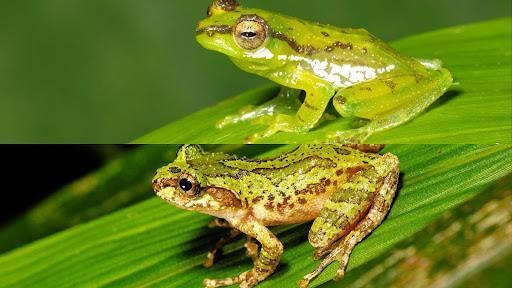
New Record of Frog Species in India
India, a country renowned for its incredible biodiversity, has just welcomed a new addition to its frog family. Scientists have confirmed the first record of Gracixalus medogensis, a tree frog previously known from Tibet, in the northeastern state of Arunachal Pradesh. This groundbreaking discovery not only expands the species’ known range but also sheds light on the region’s rich, yet underexplored, amphibian diversity.
Located in the eastern Himalayas, Arunachal Pradesh is a hotspot for biodiversity, with a vast array of flora and fauna that are unique to the region. The recent discovery of Gracixalus medogensis is a testament to the area’s importance as a refuge for endangered species. The tree frog, which was previously known only from Tibet, has now been found to inhabit the dense forests of Arunachal Pradesh.
Gracixalus medogensis, also known as the Medog tree frog, is a remarkable species that boasts some impressive physical characteristics. Its distinctive green blood, which contains a high concentration of biliverdin, is a result of its unique genetic makeup. This unique adaptation allows it to absorb oxygen more efficiently, making it well-suited to its arboreal lifestyle. Additionally, its bones have a striking turquoise coloration, which is a rare feature among amphibians.
The discovery of Gracixalus medogensis in Arunachal Pradesh was made possible through a detailed study of the region’s frog diversity. A team of scientists, led by Dr. S.D. Biju, a renowned herpetologist, conducted extensive field surveys and genetic analyses to identify the species. The team collected specimens from various locations in Arunachal Pradesh, including the Namdapha National Park and the Dibru-Saikhowa National Park.
The study, which was published in the journal ‘Zootaxa’, provides valuable insights into the morphology and calls of Gracixalus medogensis. The team found that the species has a distinctive advertisement call, which is characterized by a series of high-pitched chirps. This unique vocalization is an important tool for identifying the species and understanding its behavior.
The discovery of Gracixalus medogensis is significant not only for the scientific community but also for amphibian conservation efforts. As the species’ known range has expanded, conservationists are now able to develop targeted strategies to protect it. The team behind the study is advocating for the creation of protected areas and habitat preservation measures to ensure the long-term survival of the species.
India is home to a staggering 350 species of frogs, with many more believed to remain undiscovered. The country’s diverse geography, which ranges from the Himalayas to the Western Ghats, provides a unique opportunity for species to evolve and thrive. However, many Indian frog species are facing threats such as habitat destruction, climate change, and disease, which are pushing them towards extinction.
The discovery of Gracixalus medogensis is a timely reminder of the importance of conservation efforts in India. As the country works to protect its rich biodiversity, scientists and conservationists are working together to develop effective strategies for preserving its unique frog species.
In conclusion, the discovery of Gracixalus medogensis in Arunachal Pradesh is a significant milestone in the study of India’s frog diversity. The species’ unique characteristics, such as its green blood and turquoise bones, make it a fascinating subject for study. As scientists continue to learn more about this remarkable species, conservation efforts are underway to protect it and its habitat. This discovery serves as a reminder of the importance of preserving India’s incredible biodiversity and the vital role that scientists and conservationists play in this effort.
Source: https://researchmatters.in/news/new-member-indias-frog-diversity-green-blood-and-turquoise-bones






